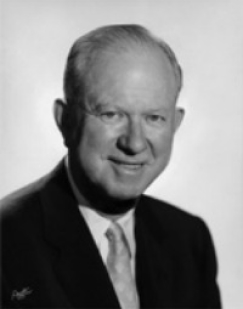Our History
Along the way, there have been four major name changes: The International Society for Crippled Children, 1922; The International Society for the Welfare of Cripples, 1939; The International Society for the Rehabilitation of the Disabled, 1960; and Rehabilitation International, 1972. These name changes reflect changing social awareness towards disability. At present, the organization is known around the world by the abbreviation of its 1972 name: RI Global.

RI Global members and RI Global leadership have been key players in various important disability-rights movements throughout history.
Notable Achievements

1929
Petitioned the League of Nations to establish an office to oversee the collection of disability-related statistics
1961
Established the conceptual basis for community-based rehabilitation
1968
Created the International Symbol of Access
1975
Conducted the first global survey on disability
1978
Setting down a list of policies to govern the use of the International Symbol of Access
1998
Setting down a list of policies to govern the use of the International Symbol of Access
1999
Presented the Charter for the Third Millennium (in English, Spanish, Portuguese)
2000
Adopted the Beijing Declaration on the Rights of People with Disabilities in the New Millennium
1981-2006
Led the original campaign for the drafting and adoption of the United Nations Convention on the Rights of Persons with Disabilities (CRPD)
2007
Contributed to legal reform in Mexico and Argentina, granting more adequate government assistance to people with disabilities, including healthcare and pensions
RI Presidents
1922-1929
1922-1929
Edgar F. Allen
American founder and first president of the National Society for Crippled Children, which became EasterSeals, one of the USA’s largest disability organizations.
1929-1942
1929-1942
Paul H. King
American Attorney who helped pass the Crippled Child’s Bill of Rights in 1931 and establish an International Bureau of Information on Crippled Children.
1942-1948
1942-1948
Dr. Juan Farhill
Mexican orthopedic surgeon who was the first chief surgeon of the Mexican Unit of the Shriners Hospital for Crippled Children; Frida Kahlo’s surgeon who appeared in her last self-portrait.
1948-1951
1948-1951
Dr. Henry Kessler
American orthopedic surgeon who founded Kessler Institute for Rehabilitation, which prevailed in patient care, community education, research training, and international programming for disabled.
1951-1954
1951-1954
Konrad Persson
Swedish government official who became one of the founders of the social welfare system.
1954-1957
1954-1957
Dr. Howard Rusk
American founder of the Institute of Physical Medicine and Rehabilitation, New York University Medical Center, later the Rusk Institute, specialized in Polio.
1957-1960
1957-1960
Sir Kenneth Coles
Australian businessman and philanthropist who, from 1939 to 1969, served as the director of the New South Wales Society for Crippled Children, during a period of remarkable expansion.
1960-1963
1960-1963
Hall H. Popham
Canadian retail businessman.
1963-1966
1963-1966
Dr. C.W. de Ruijter
Dutch Physician who helped develop Netherlands’ three-part system of residential care and independent living for people with physical disabilities.
1966-1969
1966-1969
Dr. Gudmund
Norwegian Minister of Defence and Minister of Social Affairs who wrote on the relationship between impairment, disability and dependency.
1969-1972
1969-1972
Jean Regniers
Belgian industrialist who helped found a business that not only provided disabled people with jobs but also integrated them into a profit-making enterprise.
1972-1976
1972-1976
Dr. Kurt-Alphons Jochheim
German rehabilitation physician and the founding father of integrated medical and socio-occupational rehabilitation.
1976-1980
1976-1980
Kenneth Jenkins
Australian politician who inspired thousands of people around the world to engage in a sustained practical commitment to the interests of people with a disability.
1980-1984
1980-1984
Sir Harry S.Y. Fang
Hong Kong orthopedic surgeon who reformed social welfare and rehabilitation services in Hong Kong Sports Association for the Physically Disabled.
1984-1988
1984-1988
Dkfm. Otto Geieker
Austrian diplomat and former deputy general manager of the Austrian Internal Department of Rehabilitation.
1988-1992
1988-1992
Fenmore Seton
American business owner and philanthropist who received the Presidential Distinguished Service Award from President George Bush for his work to help the disabled.
1992-1996
1992-1996
John W. Stott
Influential leader who received the Queens Service Order for his work on disability rights.
1996-2000
1996-2000
Dr. Arthur O’Reilly
Irish doctor who served as the former Director, National Disability Authority of Ireland and advocated for a constitutional amendment to protect the disabled from discrimination.
2000-2004
2000-2004
Lex Frieden
One of the US’s pre-eminent disability activists and leaders of the independent living movement; a major figure behind the enactment of the Americans with Disabilities Act in 1990.
2004-2008
2004-2008
Michael Fox
Australian architect, director and Chair of Rights & Inclusion Australia, who was extensively involved in the drafting, adoption and implementation of the UN CRPD.
2008-2012
2008-2012
Anne Hawker
Principal Disability Advisor of the New Zealand Ministry of Social Development.
2012-2016
2012-2016
Jan Monsbakken
Norwegian consultant and government advisor in disabilities for the Norwegian Women’s Public Health Association and the Norwegian Nurses Association.
2016-2020
2016-2020
Haidi Zhang
Renowned author and current Chairperson of the China Disabled Persons Federation and vice chairperson of the Shandong Writers’ Association.
Support our work.
Make a difference in the lives of disabled people around the world. RI welcomes new opportunities to expand its own capacities through collaboration with other organizations.


